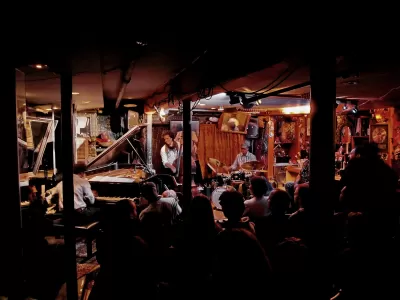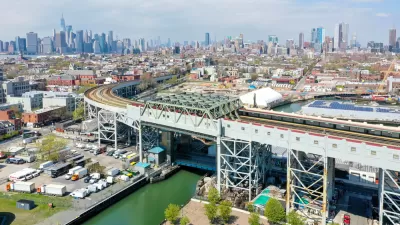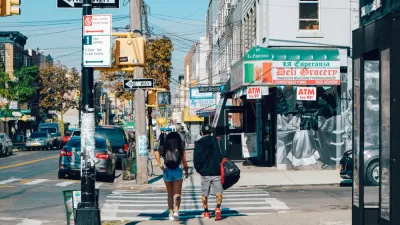A study of the musical nightlife of New York shows these spaces are an integral part of the city’s urban landscape.

A report released in September called Creative Footprint NYC takes a closer look at music venues in the city, their role in fostering community, and ways to ensure that they do not disappear.
In addition to locating the venues, the study considered the type of music the venues made available, reports Feargus O’Sullivan:
Crucially, the report doesn’t only measure venue size and location; it also develops metrics that help to assess the cultural and community value of each site. It does this by creating an “experimental output” metric that appraises the extent to which a venue provides non-mainstream alternatives to commercial offerings, and thus to what extent it broadens the city’s cultural possibilities.
Most venues are in Manhattan, but the bulk of experimental venues are in Brooklyn and Queens, according to the report. Gentrification and rising rents in these areas can threaten these alternative venues, and the consequences can run deep, O’Sullivan points out:
And when less commercial venues are forced to close, a focal point for part of the local community is lost, as is a place where some social divides are bridged. When these venues are cultural beacons for minority communities, which themselves face the threat of displacement, the potential damage to community cohesion and neighborhood identity is even greater.
Part of remedying this, says Sullivan, is understanding the value and contribution of these music venues. In addition, policies can support music venues, such as developer incentives, rent control, and easier permitting processes. “Something needs to be done to protect and nurture the city’s vitality, to prevent it from becoming a mere dormitory for the better off. That something could—indeed should—involve a more positive attitude to nightlife,” argues Sullivan.
FULL STORY: What Small, Diverse Music Venues Mean to New York City

Alabama: Trump Terminates Settlements for Black Communities Harmed By Raw Sewage
Trump deemed the landmark civil rights agreement “illegal DEI and environmental justice policy.”

Study: Maui’s Plan to Convert Vacation Rentals to Long-Term Housing Could Cause Nearly $1 Billion Economic Loss
The plan would reduce visitor accommodation by 25% resulting in 1,900 jobs lost.

Planetizen Federal Action Tracker
A weekly monitor of how Trump’s orders and actions are impacting planners and planning in America.

This Toronto Suburb Has More Bus Riders Than Columbus, Ohio
Brampton, Ontario used gradual improvements in service to prove that if you build it, they will ride.

Paris Bike Boom Leads to Steep Drop in Air Pollution
The French city’s air quality has improved dramatically in the past 20 years, coinciding with a growth in cycling.

Why Housing Costs More to Build in California Than in Texas
Hard costs like labor and materials combined with ‘soft’ costs such as permitting make building in the San Francisco Bay Area almost three times as costly as in Texas cities.
Urban Design for Planners 1: Software Tools
This six-course series explores essential urban design concepts using open source software and equips planners with the tools they need to participate fully in the urban design process.
Planning for Universal Design
Learn the tools for implementing Universal Design in planning regulations.
Smith Gee Studio
Alamo Area Metropolitan Planning Organization
City of Santa Clarita
Institute for Housing and Urban Development Studies (IHS)
City of Grandview
Harvard GSD Executive Education
Toledo-Lucas County Plan Commissions
Salt Lake City
NYU Wagner Graduate School of Public Service





























